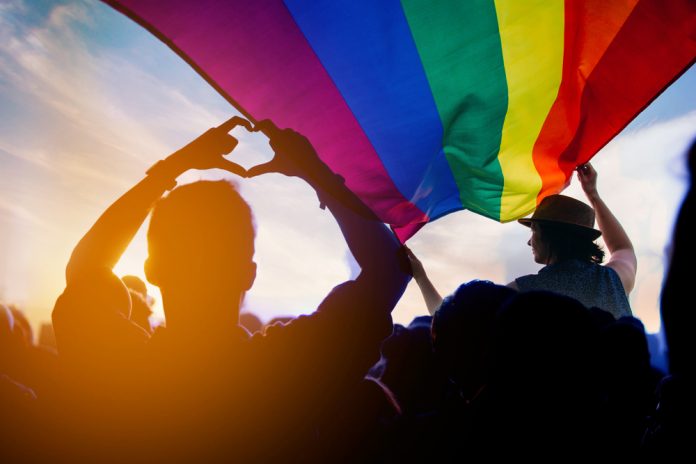
In today’s diverse workforce, LGBTQ+ individuals face unique workplace barriers that demand our attention and action. While progress has been made towards greater inclusivity and workplace protections, it is crucial to recognize that LGBTQ+ employees encounter distinct challenges that set them apart from their cisgender and heterosexual counterparts.
- Discrimination, microaggressions, and a lack of representation can hinder their professional growth and impact their well-being. Understanding these hurdles is essential for cultivating a truly inclusive work environment that fosters psychological safety, values diversity, and empowers all employees to thrive.
- By acknowledging the disparities faced by LGBTQ+ workers, we can work together to implement targeted initiatives, promote awareness, and build a workplace that celebrates authenticity and equality, making it easier for LGBTQ+ individuals to overcome barriers and contribute their full potential to the organization’s success.
Barriers faced by LGBTQ+ workers
- Recruiting and hiring: LGBTQ+ individuals may face discrimination during hiring due to unconscious biases or prejudices held by recruiters or hiring managers. This bias can lead to fewer job opportunities, lower chances of advancement, and wage disparities.
- Workplace culture and microaggressions: LGBTQ+ employees often don’t experience understanding and acceptance, and may even experience hostility, in their work environments. Microaggressions, such as insensitive remarks or exclusionary behaviors, can create a hostile or unwelcoming atmosphere.
- Lack of representation: A lack of visible LGBTQ+ role models can hinder the ability of LGBTQ+ employees to feel seen, valued, and supported within the organization. This absence of role models may limit their career growth and opportunities for advancement.
- Unequal compensation: Compared to their cisgender or heterosexual counterparts, LGBTQ+ individuals may face pay gaps and disparities , leading to financial inequalities over the LGBTQ+ person’s lifetime..
Tools for overcoming barriers
Multiple systems and processes are available to help LGBTQ+ workers overcome these barriers. The goal is for them to feel less alone in their experience by connecting them with others who share their experience.
Employee Resource Groups (ERGs): ERGs create a sense of community for LGBTQ+ workers, allowing them to safely share the challenges they face, while also providing representation in numbers and opportunities to make a visible impact on business goals. In addition, the involvement of allies and the opportunity to liaise with members of other ERGs helps LGBTQ+ workers recognize the impact of giving and receiving support from people outside of the LGBTQ+ community who are also committed to inclusion and belonging.
Networking: It exposes people to ideas, perspectives and opportunities beyond what they experience from the people they spend the most time with day-to-day. Building one-to-one relationships helps LGBTQ+ individuals to overcome the isolation of being an “only” in a group, and these relationships enable them to imagine what’s possible for themselves now and in the future.
Employers can facilitate networking not just within their organization through initiatives like mentoring programs, but also by encouraging team members to connect with other LGBTQ+ professionals outside of their organization. Examples in the U.S. include Out & Equal, Out Professionals, LGBTQ+ Chambers of Commerce, Out in Tech, StartOut, and various group coaching experiences.
Hybrid work models: Giving employees the flexibility to work where they want to – even part of the time – relieves them of the burden of putting on a “mask” by showing up to work with less than their full selves. Hybrid makes it easier for LGBTQ+ individuals to nurture relationships, identities and passions outside of the office. When someone’s whole life is in balance, they are better able to perform at their highest ability in their professional lives. Lastly, working from home helps them reduce the risks for microaggressions that many LGBTQ+ workers were happy to avoid when the pandemic forced everyone to stay home.
The bottom line
While businesses may never be able to fully eliminate all of the obstacles for LGBTQ+ workers, they can demonstrate to their employees a commitment to being part of the solution. At the core, they need to be dedicated to fostering psychological safety throughout the organization.
When team members know that it’s safe to share their ideas, opinions, or even make mistakes without jeopardizing their belonging within the team, they will be less likely to hold back their skills and brilliance. Even if a company does not have LGBTQ+ senior leaders, examples of the people in power sharing more about what makes them fully-formed, vulnerable humans will have ripple effects across the organization. Team members will be more likely to ask for (and offer) help when it’s needed and speak freely about ideas or concerns.
The net effect will be that diverse talent not only gets hired, but that talent knows that they are valued for what they uniquely bring to the team, and are ultimately more likely to stay.



